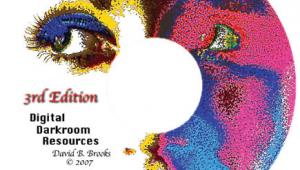The Digital Darkroom
Making Digital Mattes In Photoshop; Adding Borders And Accents To Enhance Your Image
In the old days we all used to keep tons of different colored matte board in
stock to matte our photos. Or, we used the guy down the street who charged us
plenty for those fancy mattes that we loved so much. Well, today you can do
it all in Adobe's Photoshop. This article will give you the basics of
creating an oval double matte in Photoshop.
1. I started with a nice landscape (horizontal) image that
just cried out for an oval matte.
Next, I went to View to Show to Grid. The default grid that came up wasn't
quite fine enough, so I then went to Edit to Preferences to Guides, Grid &
Slices. I wanted to set the grid to a relatively fine pattern. So, I set a Gridline
every 1" with six subdivisions.
 |
|
|
After that it was time to get the Oval Selection tool. Now, here is the tricky
part and I'm sorry that I don't have a screen capture to show this
to you, so pay close attention to the instructions. After you "select"
the Oval tool, place your cursor in the upper left-hand corner and look carefully
at the grid intersection lines. In your mind, imagine a diagonal line drawn
from the upper left corner to the lower right corner. Now, along this imaginary
diagonal line, count grid intersections as you move away from the upper left
corner of the picture. In my case, I counted three intersections and then placed
the cursor cross hairs at that third intersection. Holding down the mouse button,
I then dragged the cursor to the lower right corner and stopped dragging it
with the cursor cross hairs centered on the third grid intersection from the
lower right corner. Then, let loose of the mouse button and you will have created
an oval selection.
2. Just to review: Drag the Oval Selection tool from the third
grid intersection in the upper left corner to the third grid intersection in
the lower right corner. By using the grid intersection points, you can create
a very nice, true, oval.
Having created the selection, I went to Select to Inverse to invert the selection.
Next, I wanted to get a nice gold color to fill the selection. So, I went to
the Color palette and selected R: 255; G: 209; and B:0.
 |
|
|
3. Then, I went to Edit to Fill and used 100 percent to fill
the selected area with gold color. After that, I deselected the oval selection
by going to Select to Deselect.
Now it was time to create the second matte. So, it was time to create another
oval selection. I went back, got the Oval Selection tool and this time instead
of placing the cursor in the third grid intersection from the upper left corner,
I placed the cursor in the second grid intersection and dragged it to the second
grid intersection in the lower right corner. This will create an oval selection
just slightly larger than the first oval. This second oval will be exactly the
same distance from the first oval all the way around.
 |
|
|
And, that bit of magic is the direct result of using the grid pattern overlay
to allow you to establish the starting and ending points when drawing the oval
selections.
- Log in or register to post comments

















































